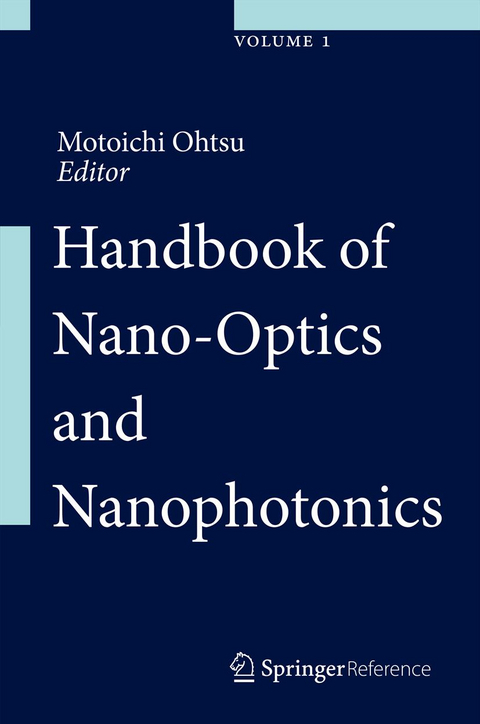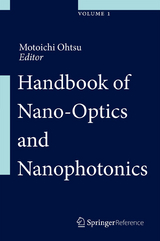Handbook of Nano-Optics and Nanophotonics
The objective of this work is to review the innovations of optical science and technology by nano-optics and nanophotonics. While in conventional optical science and technology, light and matter are discussed separately, in nano-optics and nanophotonics, light and matter have to be regarded as being coupled to each other, and the energy flow between nanoparticles is bidirectional. This means that nano-optics and nanophotonics have to be regarded as a technology fusing optical fields and matter.
This unique work reviews and covers the most recent topics of nano-optics, applications to device operations, fabrication techniques, energy conversion, information processing, architectures and algorithms. Each chapter is written by the leading scientists in the relevant field. Thus, this work will provide high-quality scientific and technical information to scientists, engineers, and graduate students who are and will be engaged in R&D of nano-optics and nanophotonics. Especially, the topics to be covered by this work will be popularly used by the engineers in the rapidly growing market of the optical energy conversion.
Motoichi Ohtsu has been a professor at the Tokyo Institute of Technology, Graduate School of Interdisciplinary Science and Engineering, from 1991 to 2004. He has been Director at the Nanophotonics Research Center of the University of Tokyo since 2008. In addition, he has been a professor at the Department of Electronics Engineering, Graduate School of Engineering, of the University of Tokyo since 2004.
From the Contents: Part 1: Principle and Theoretical Background.- Progress in Nanophotonics.- Classical Theory of Electromagnetic Near Fields.- Part 2: Elemental Tools.- Near-Field Optical Fiber Probes and the Imaging Applications.- Part 3: Sensing and Spectroscopy.- Nano-Optical Imaging and Spectroscopy of Single Semiconductor Quantum Consistuents.- Part 4: Devices, Fabrication and Relevant Materials.- Integration and Evaluations of Nanophotonic Devices Using Optical Near Field.- Part 5: SystemApplications.- Architectural Approach to Nanophotonics for Information and Communication Systems.- Part 6: Related Basic Sciences.- Modulation of an Electron Beam in Optical Near-Fields.
| Erscheint lt. Verlag | 22.5.2013 |
|---|---|
| Zusatzinfo | XVI, 1071 p. 733 illus., 120 illus. in color. In 2 volumes, not available separately. |
| Verlagsort | Berlin |
| Sprache | englisch |
| Maße | 155 x 235 mm |
| Gewicht | 1925 g |
| Themenwelt | Naturwissenschaften ► Physik / Astronomie ► Optik |
| Naturwissenschaften ► Physik / Astronomie ► Quantenphysik | |
| Naturwissenschaften ► Physik / Astronomie ► Theoretische Physik | |
| Schlagworte | advanced communication systems • high capacity magnetic storage • nano-electro-optics • nano-optics • Nanophotonics • Nanospectroscopy • optical nanofabrication • optical near fields • security systems and energy conversion |
| ISBN-10 | 3-642-31065-6 / 3642310656 |
| ISBN-13 | 978-3-642-31065-2 / 9783642310652 |
| Zustand | Neuware |
| Haben Sie eine Frage zum Produkt? |

